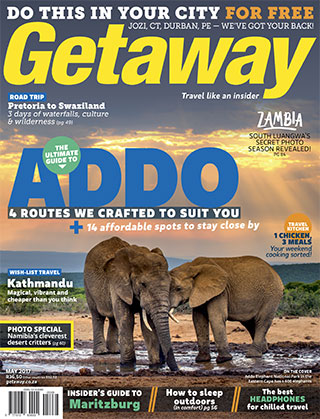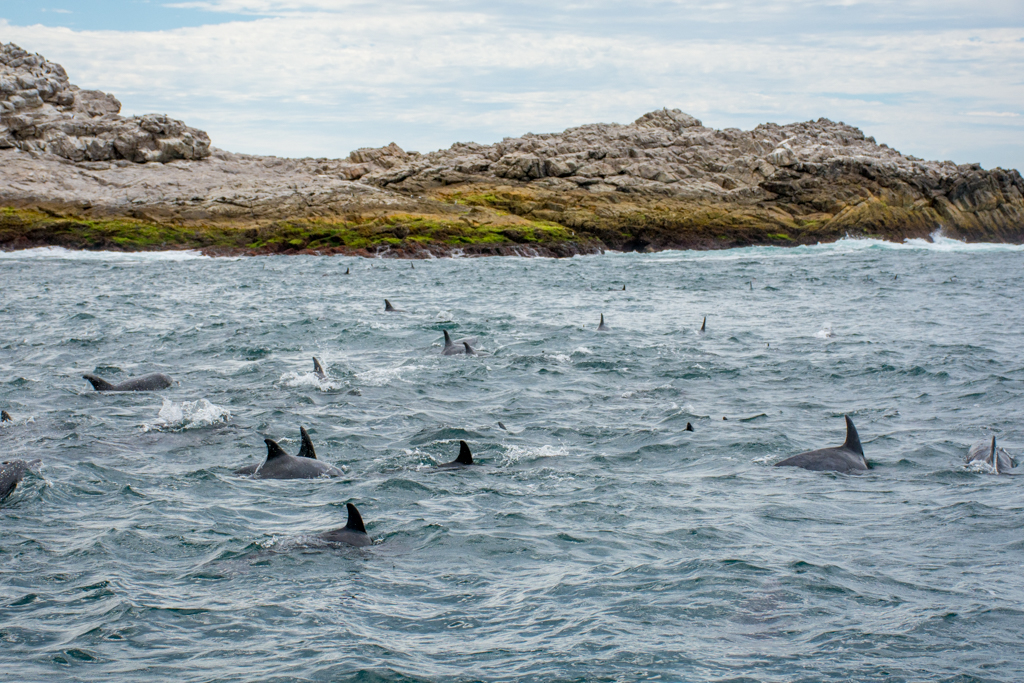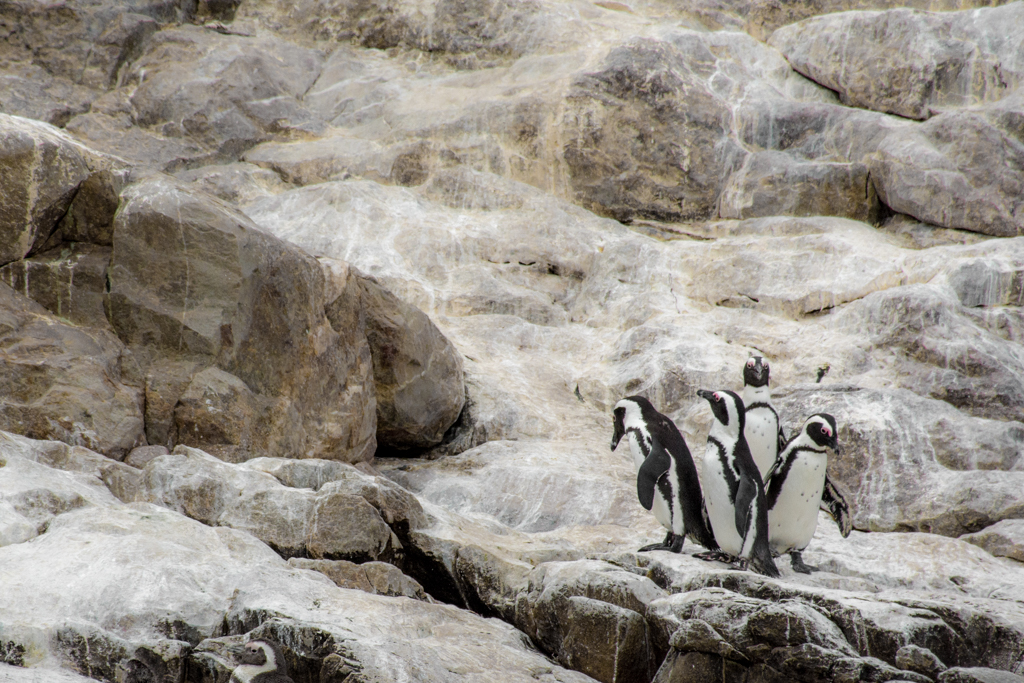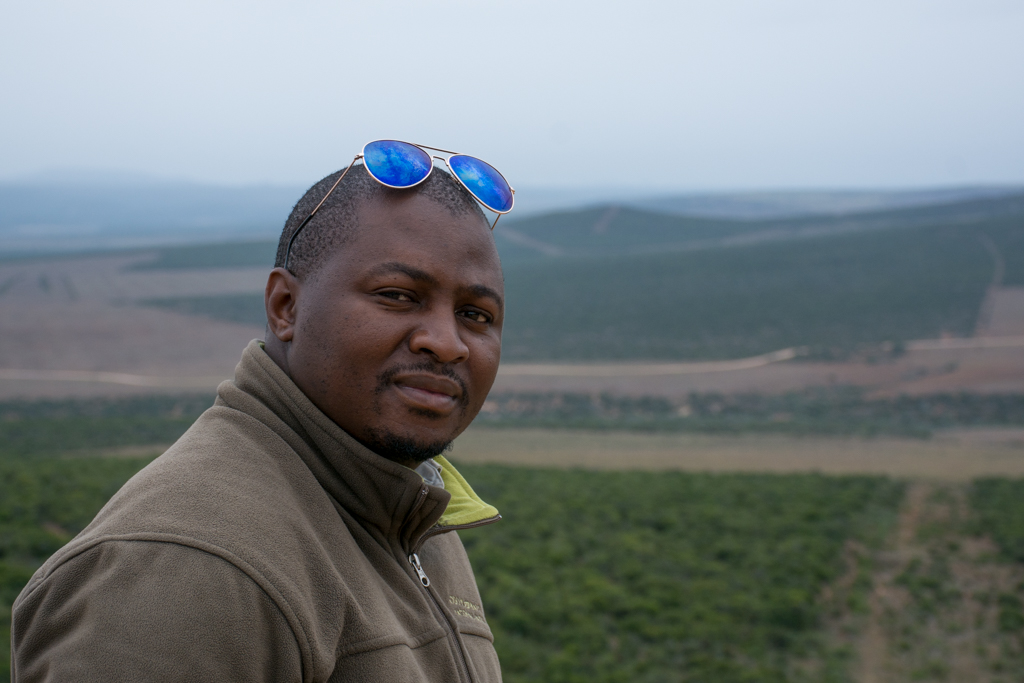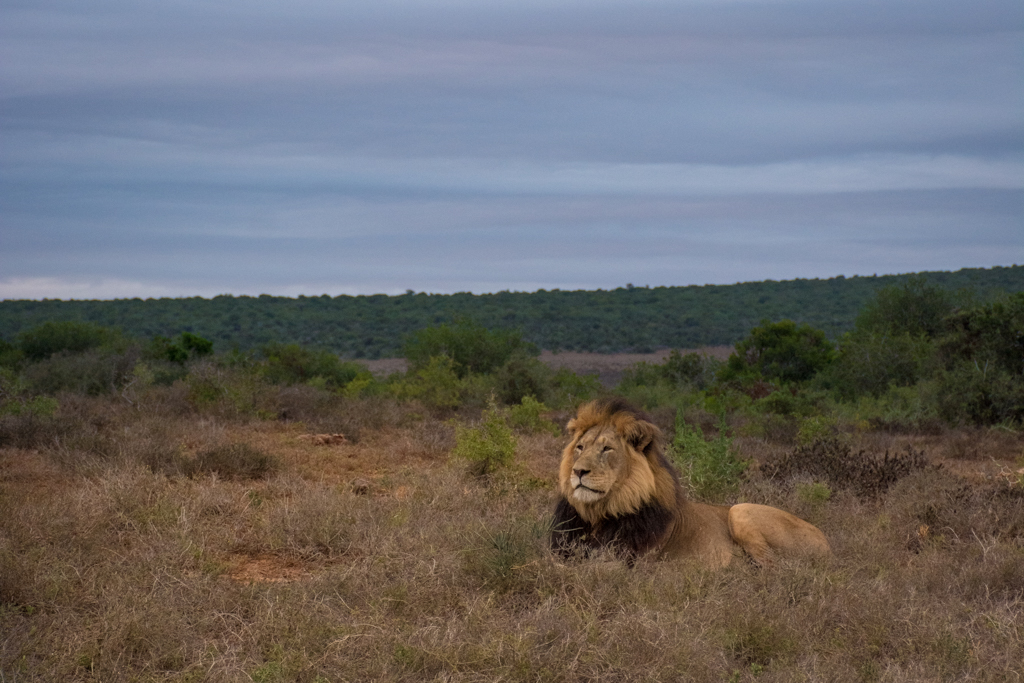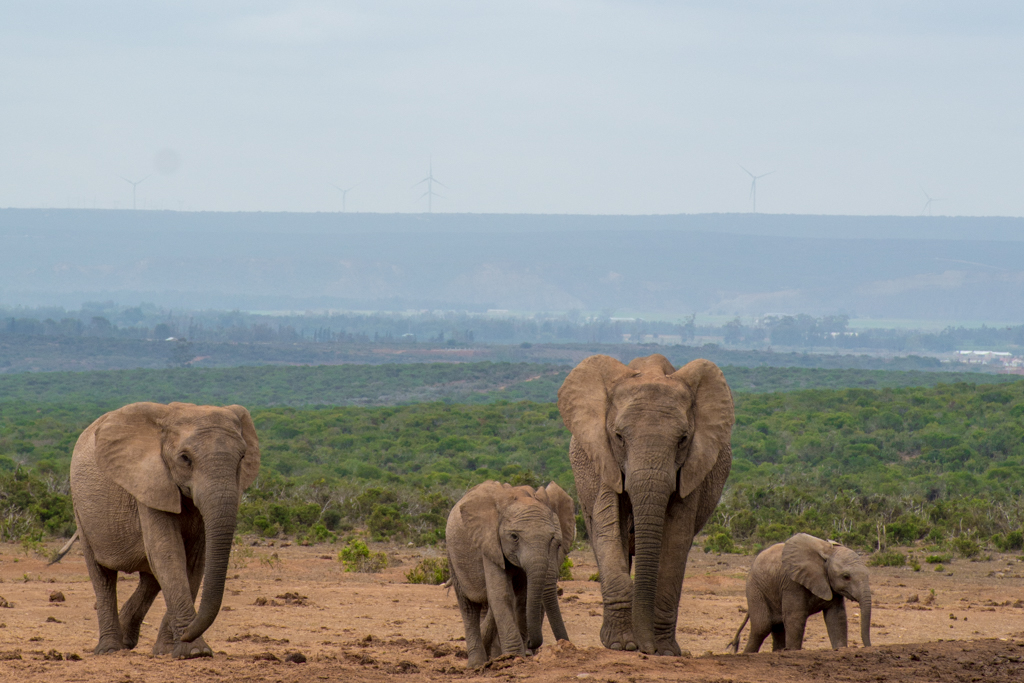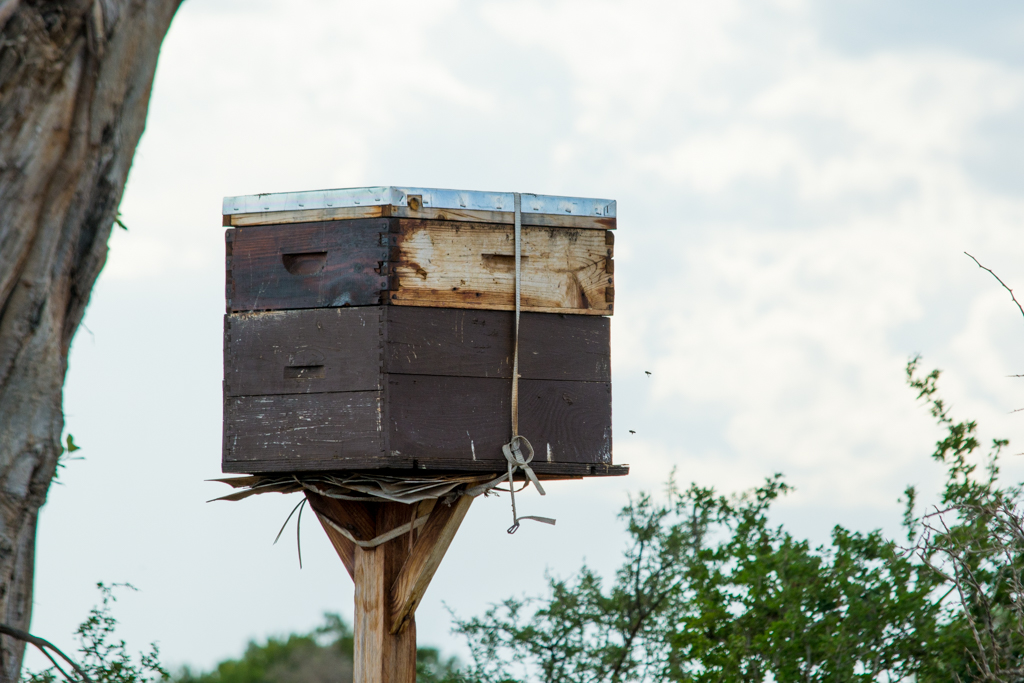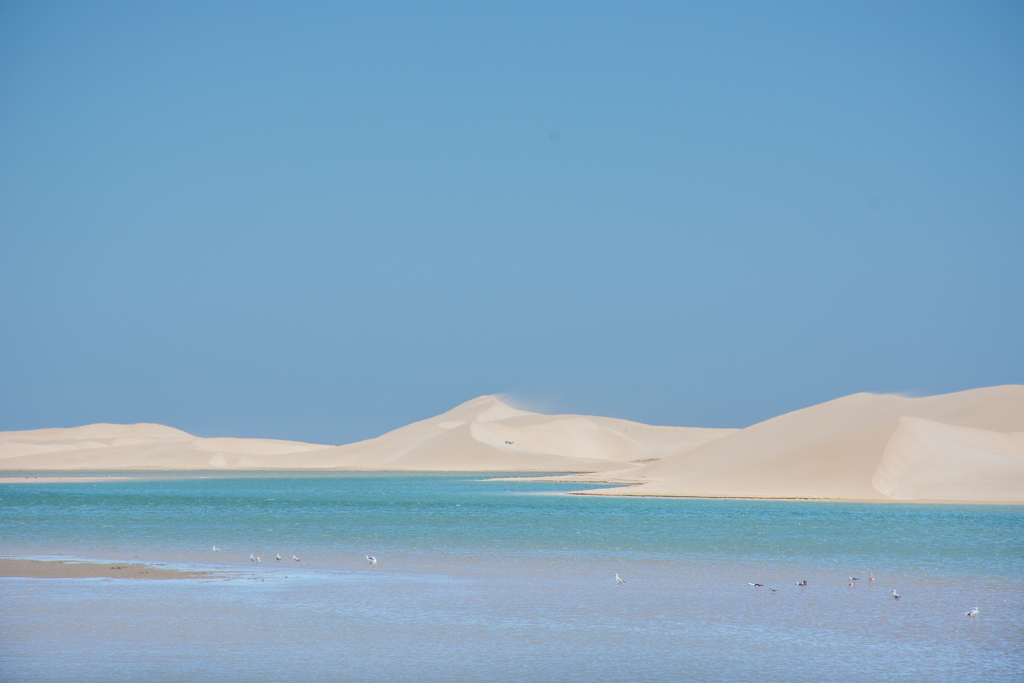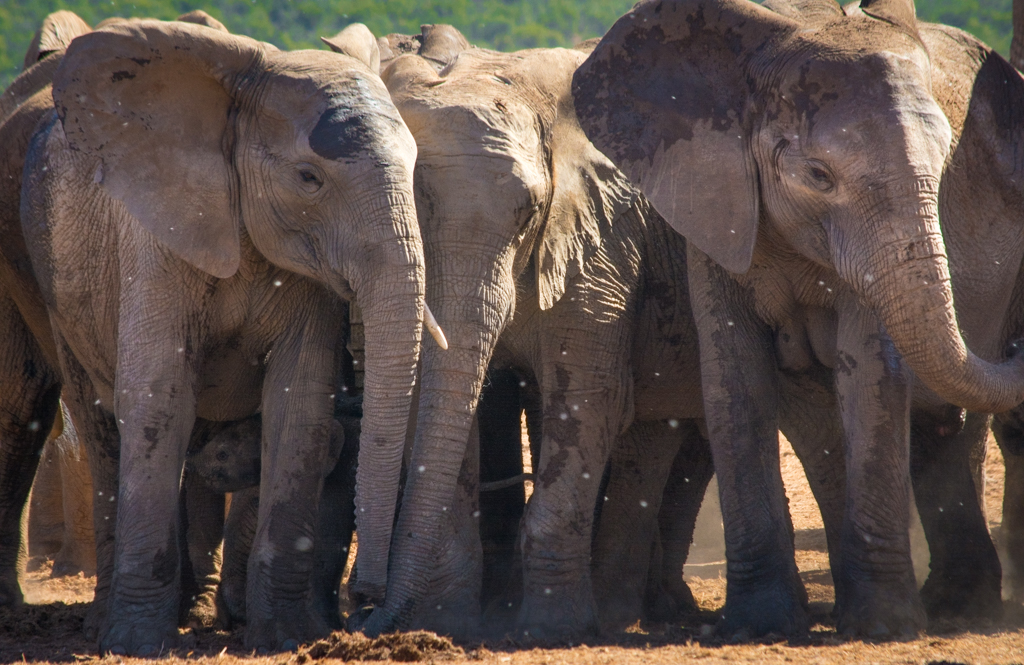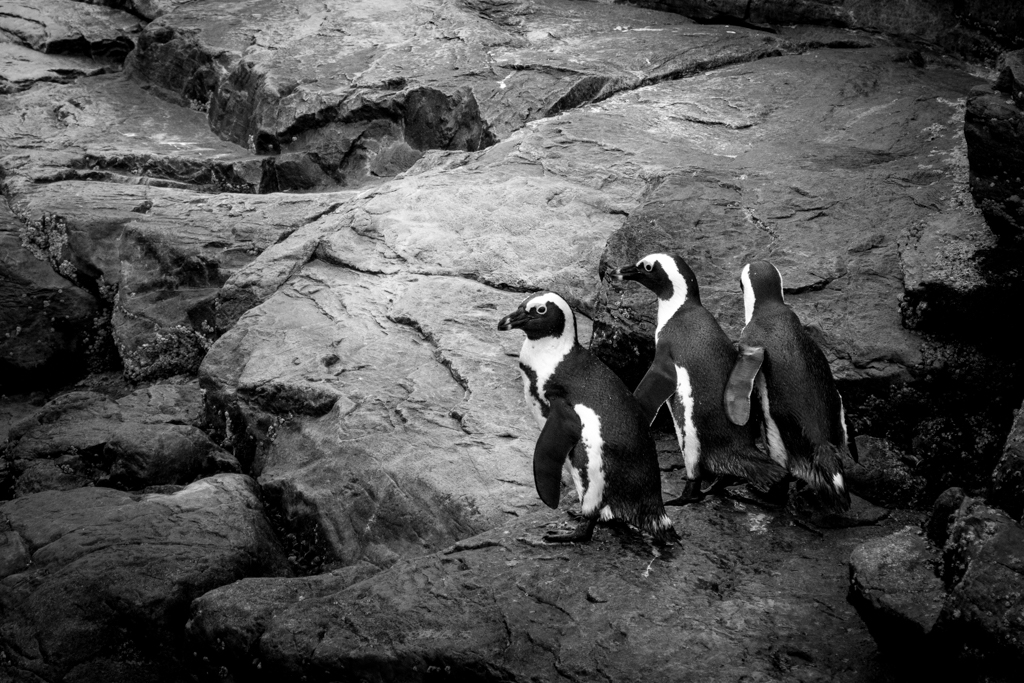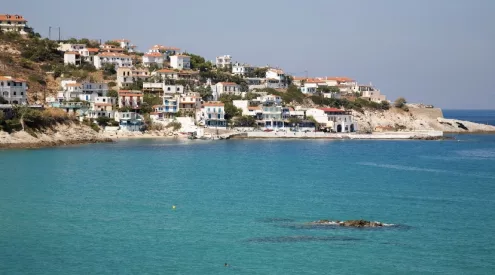We sent Melanie van Zyl to uncover the best-kept secrets at Addo Elephant National Park. She returned with the scoop on two brand new accommodation offerings and four different ways to visit this sprawling park. Here are ten things she learnt on her trip there.
1. Spekboom is a superhero
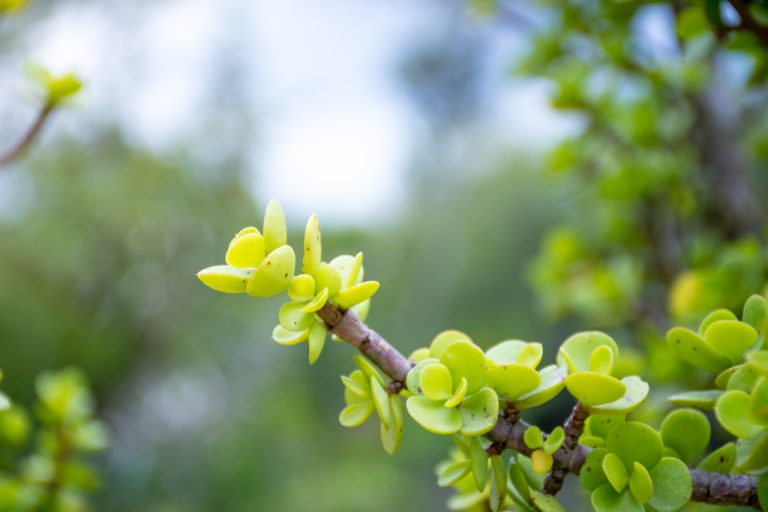
Spekboom is prolific in the main game area of Addo.
I’ll admit, when driving into the main game area of Addo Elephant National Park on my first afternoon I find the bush very thick, but this abundance is the sole reason it can sustain the park’s hearty population of over 600 elephants. The succulent spekboom regenerates quickly so the landscape doesn’t look devastated as it does in Kruger due to destructive elephant feeding. I’ve also read that the plant is so good at converting carbon dioxide that ten hectares of spekboom would equal taking 25 cars off the road for a year. There are also places where the precious thicket opens up revealing wide plains of game with pinpricks of zebra in the distance and bigger blobs of eland. There’s a free download you can get online aimed at guides operating in the park, but the book is interesting for anyone intending to visit. Download it here.
There’s a great quote in it explaining, ‘The area occupied by the Addo Elephant National Park was described by travellers during the 18th and 19th centuries as “an impenetrable thorny thicket” and a “hunter’s hell”.
Much of it is still like that today, 79-percent of the park is covered in subtropical thicket and it is especially concentrated in the main game area. It may look uniform, but the subtropical thicket contains 112 different vegetation types and is comprised of 1 558 plant species – 322 of these species (20%) are endemic and found nowhere else.
2. It’s a beautiful biodiversity hotspot
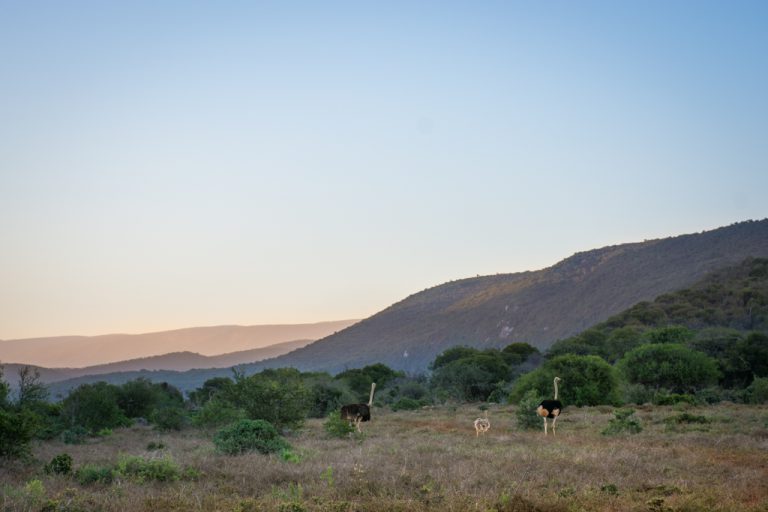
Ostrich in the lesser-know Kabouga section of Addo.
However hellish the thickets might be for hunters, there’s an even bigger portion of the park that is a protector’s paradise. Our entire country can be divided into just nine biomes (a unique ecological unit with a characteristic set of plant, animal species and climate) and Addo stretches over five of these biomes, namely the Thicket, Forest, Succulent Karoo, Fynbos and Nama Karoo, and each biome has its own sets of key species.
The big goal for the park is now to consolidate the land it has and create a functional ecological unit that stretches from the Karoo all across the mountains, fynbos, forest into the thicket and down across the coastal dune system. This diversity is key to its success. Conservation Manager John Adendorff says, ‘Addo is one of the most profitable parks. There’s nothing that even comes close for its size. It runs at 98% occupancy and there are very few spikes in the year, so it’s just consistent. It’s fully booked all the time and a very difficult place to get into.’
(Luckily for you, in our May issue we found the best-rated accommodation options outside the park.)
3. It’s got very happy ellies…
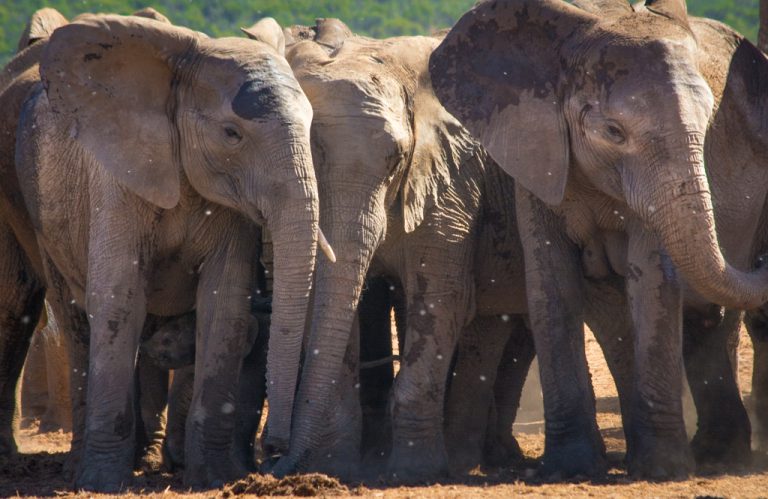
A gathering of young elephants at Hapoor Dam.
Guides in Addo don’t carry firearms because these elephants are some of the gentlest in the country. They don’t feel threatened around cars and even in musth pose little threat – that said tourists should never get too close as it makes an elephant feel threatened, rather give them space and park the car a little away. More often than not, the ellies will come to you.
4. … who don’t have tusks
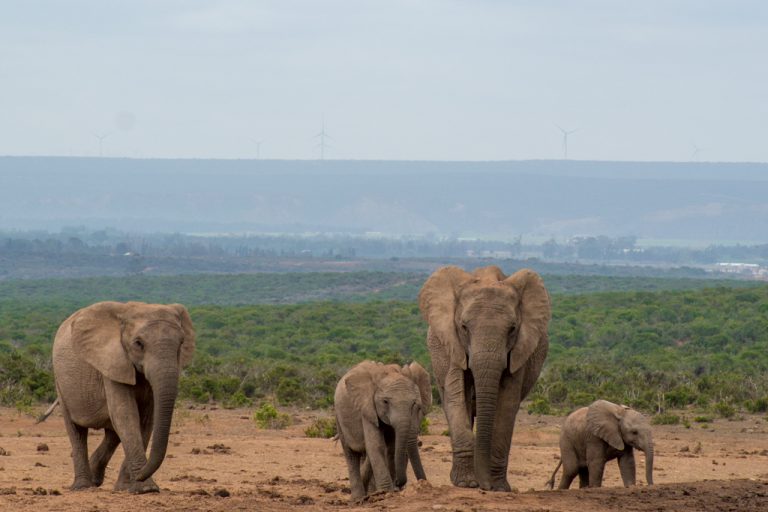
A small family of elephants, all females without tusks.
A large majority – rumoured to be around 90 percent – of the female elephants in Addo have no tusks. Bull elephants were introduced from Kruger to the widen genetic pool, so tusks are becoming more common.
5. It’s home to handsome Kalahari lions – and Sylvester the lion lives here
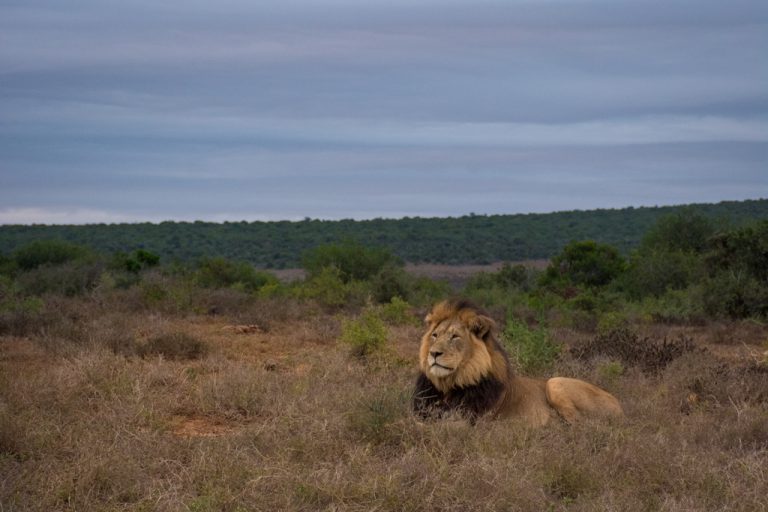
A big male sits right on the roadside in the main game area of Addo.
The iconic black-maned lions of the Kalahari were introduced to Addo over ten years ago. The big reason for choosing these lions (as opposed to somewhere like Kruger) is because they are disease-free and will not affect the buffalo population, which might have otherwise caught tuberculosis. The other reason, is that these Kalahari lions are seen to be the closest match to the now-extinct Cape Lion which used to roam the Addo area.
If you want to see Sylvester, the famous lion who managed to duck under the fence in the Karoo National Park, then you need to stay at Kuzuko Lodge in the northern Darlington section of Addo. Getaway was also tipped that the park is finishing adequate fencing in this section and it’ll soon be home to the Big Five.
6. There are penguins in Addo and they’re in trouble
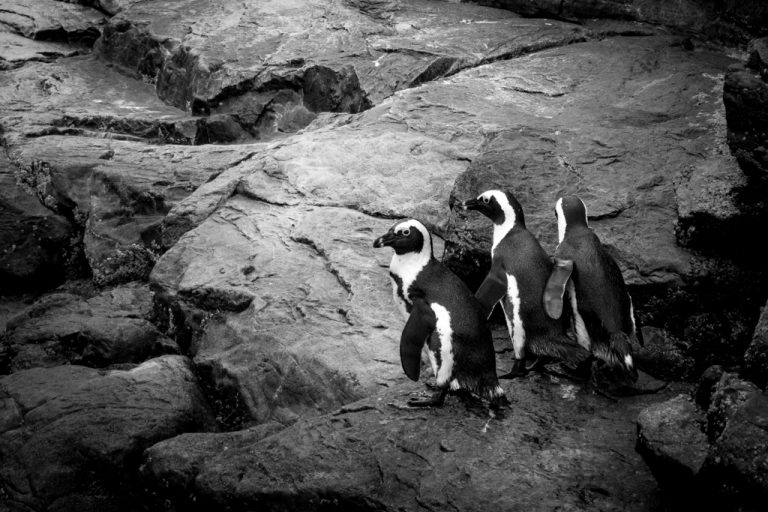
Despite having elephant in the name, Addo Elephant National Park extends right down to the ocean and currently protects some very important islands in Algoa Bay, namely St Croix and Bird Island.
The one big moment that really stood out for me during my trip to Addo was a comment made by the park’s Conservation Manager, John Adendorff, when he said, ‘To me, African Penguins are more threatened than rhino are at this stage. Because they’re not a key species or a high profile one that people really know about, or care about penguins are on the sidelines. Their numbers have dwindled alarmingly and every ten years or so, their numbers halve and if it goes on at that rate, in the next twenty or thirty years there won’t be penguins around.’ Addo is responsible for the protection of about 50 percent of the total African Penguin population.
7. You can also see super pods of dolphins
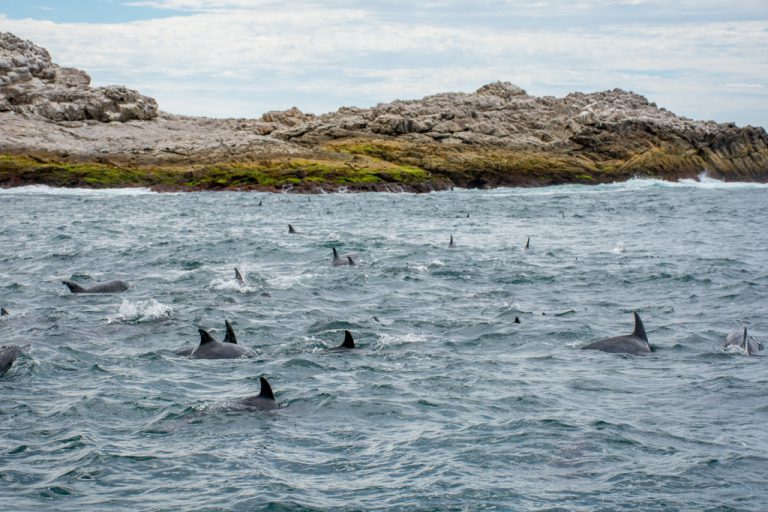
An amazing sighting of dolphins just off the coast of Port Elizabeth.
Last year Algoa Bay was named the bottlenose dolphin capital of the world after photograph proof and scientific studies showed that an estimated population of 28 482 individuals make use of these waters, making it the largest along the South African coastline.
8. It’s home to the biggest dune fields in South Africa
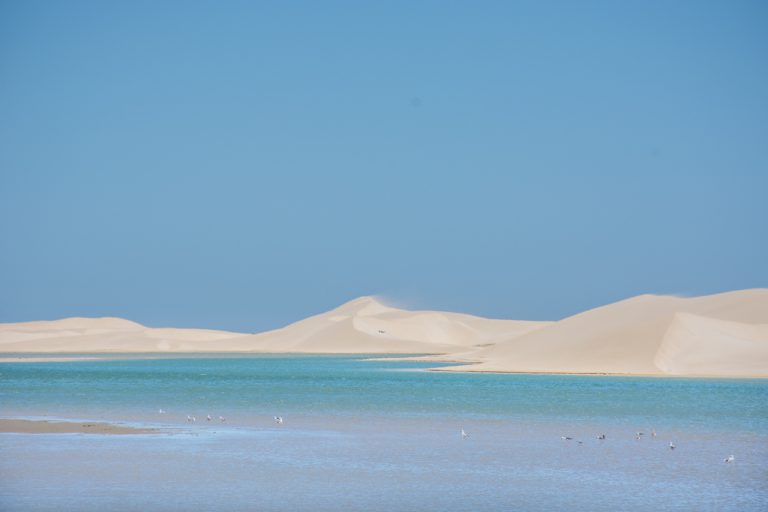
You can see big, white dunes at the Sunday’s River Mouth too.
In a lesser-known stretch of Addo, where the park meets the sea, there’s a great gathering of high and wide dunes known as the Alexandria Dune Field. This dune sea, as it’s also known, is the largest and least degraded of its kind in the whole southern hemisphere, stretching over 15 800 hectares, with its widest point being five kilometres from the sea. You can park your car at Woody Cape Backpackers and stroll along for ten minutes on the boardwalk and see the immense dune field from a beautiful viewpoint on the beach. The other, and I suspect much better, way to experience the dunes is on a two-day hike. However, it’s a tough one.
Go and see the dunes when the coral trees are also in flower, from June to October, when they form a red blanket over the tree canopy.
9. Addo is the only national park where you can hire a guide to take you around the park in your own car

Hop-on guide Simni Nogaya.
His name is Simni Nogaya and his favourite animal is the caracal, which you can spot in the park when you’re lucky. A hop-on guide means that you drive and he guides, advising which routes to take and providing insight on Addo history, wildlife, botany and more. At the moment, Simni is the only guide in the park, but they are looking for more. If you’d be keen to donate to this cause and help to train up locals, get in touch with the Addo Community Manager Temba Mangcaka by popping him a mail: [email protected]
10. Trees in Addo are protected by bees
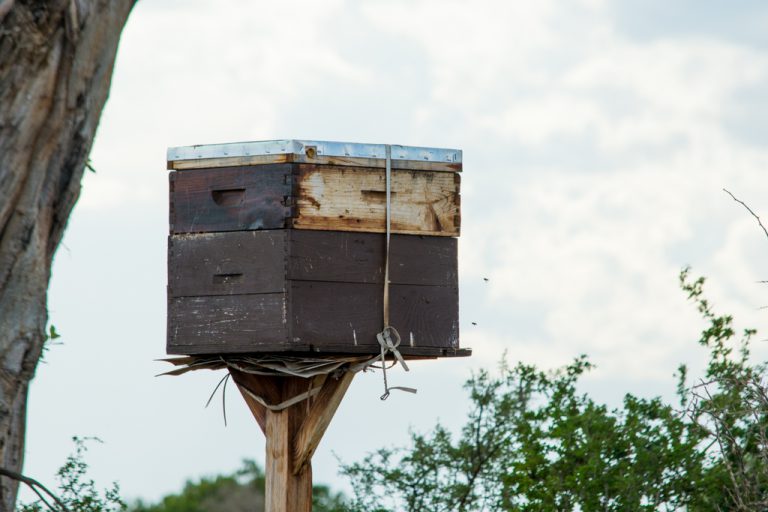
One of the bee hives in the southern, Colchester section of Addo.
At some trees in the park, you can spot small white bee boxes. Elephants avoid these protected trees unless they have an absolute dire need and they simply have to eat it. Generally, elephants are scared of bees, because their ears are very sensitive. It’s a very thin layer of skin and that’s what the bees go for. They also sting them around the eyes, on the ears and the tip of the trunk. Addo has some special trees and ellies, funny enough, need those trees as well for shade. That’s the one big stress factor they have in Addo. It’s vital that elephants keep their body temperature at certain level, so when it gets hot they either need mud wallows to go to, or they need shade.
Read more from this story in the May 2017 issue of Getaway magazine.
Our May issue features the ultimate guide to Addo, free things to do in your city, a photographic getaway to South Luangwa and how to get the best of Nepal.
